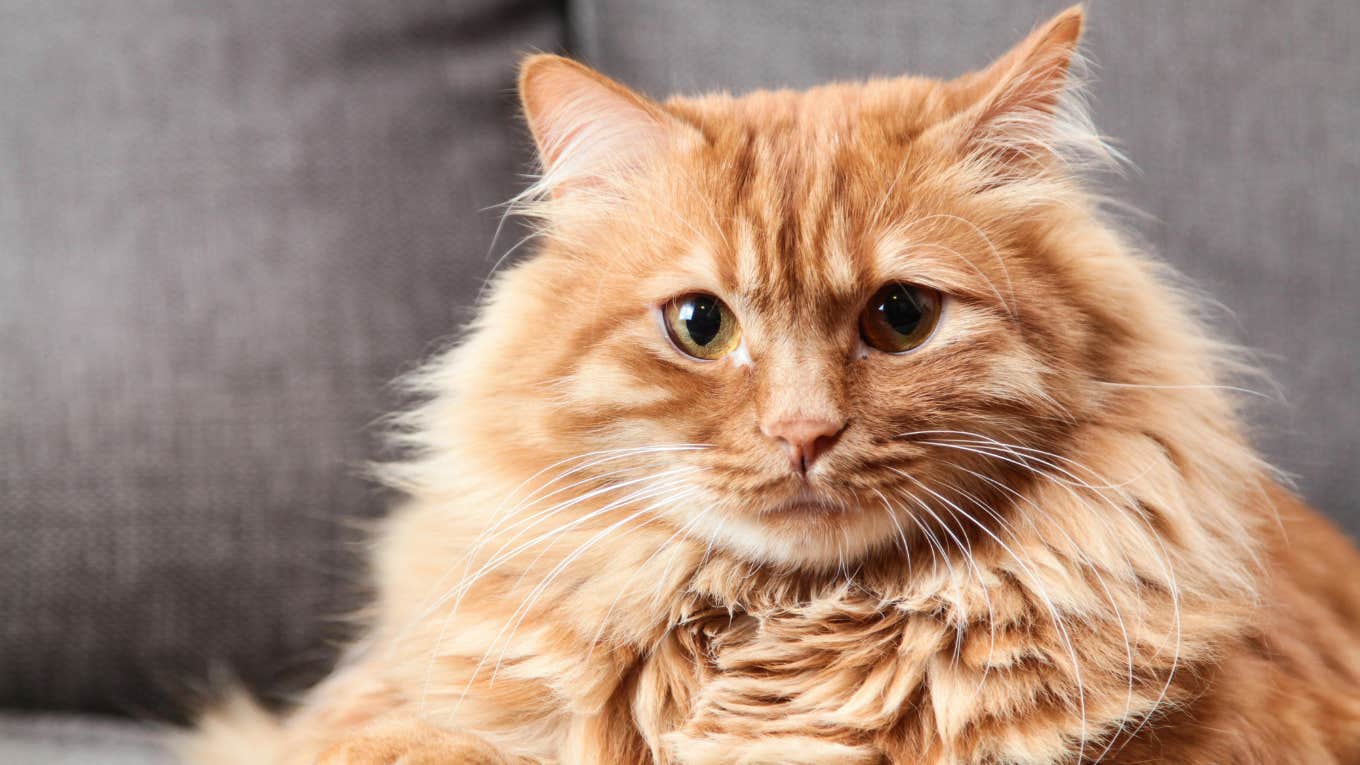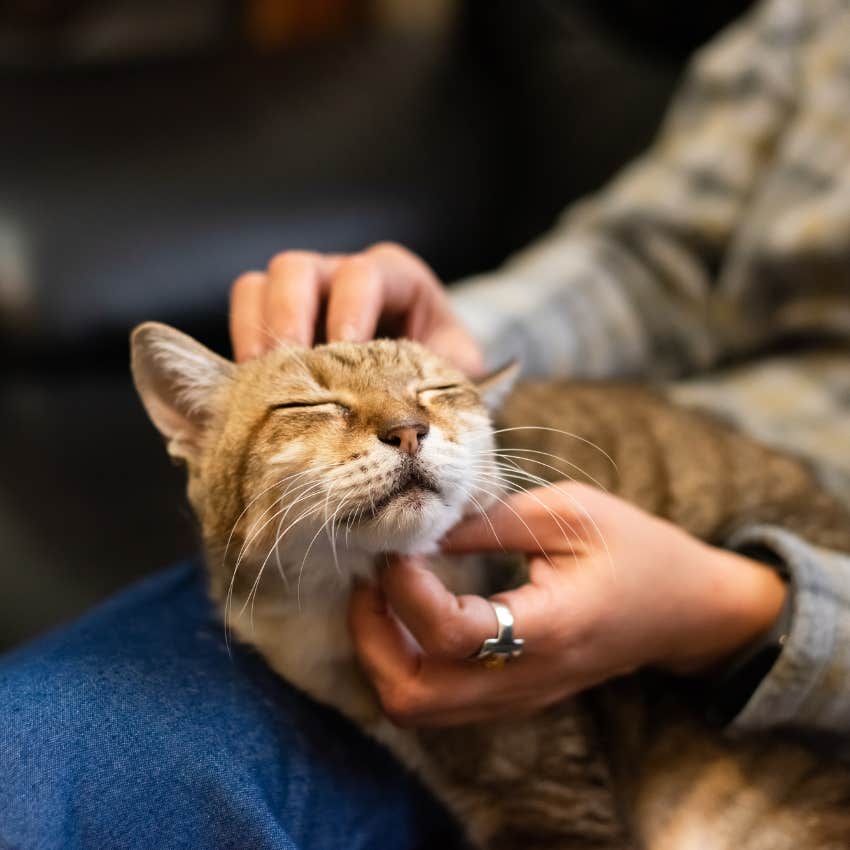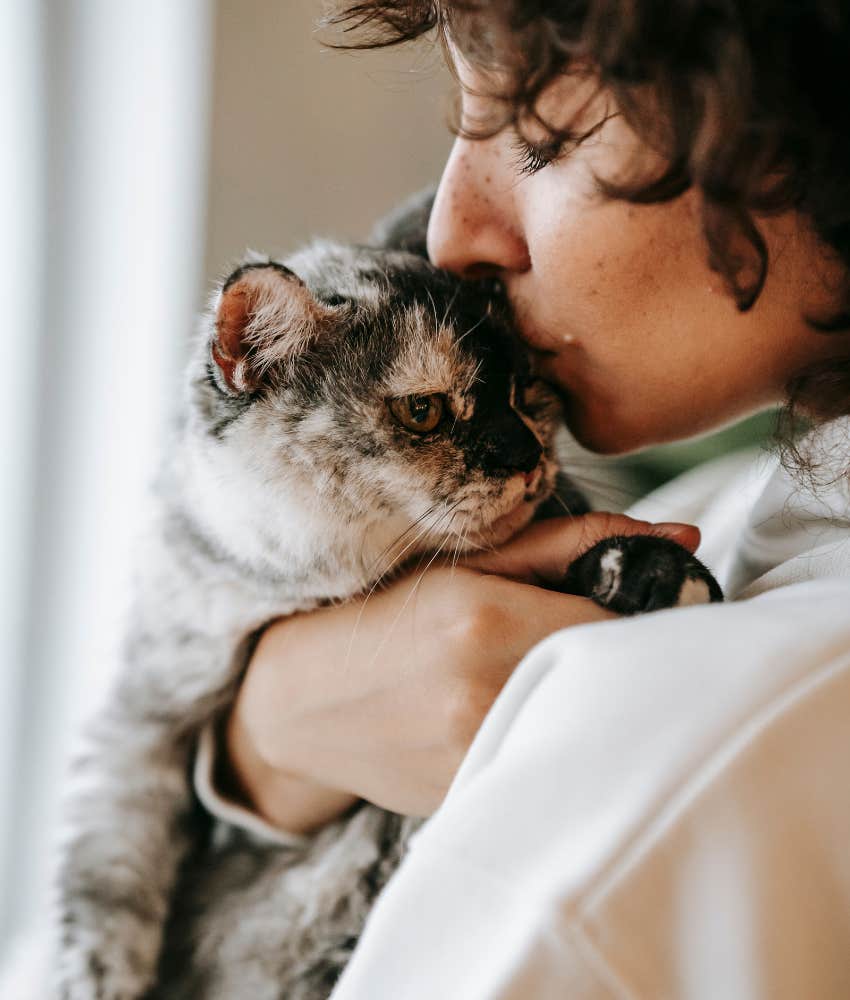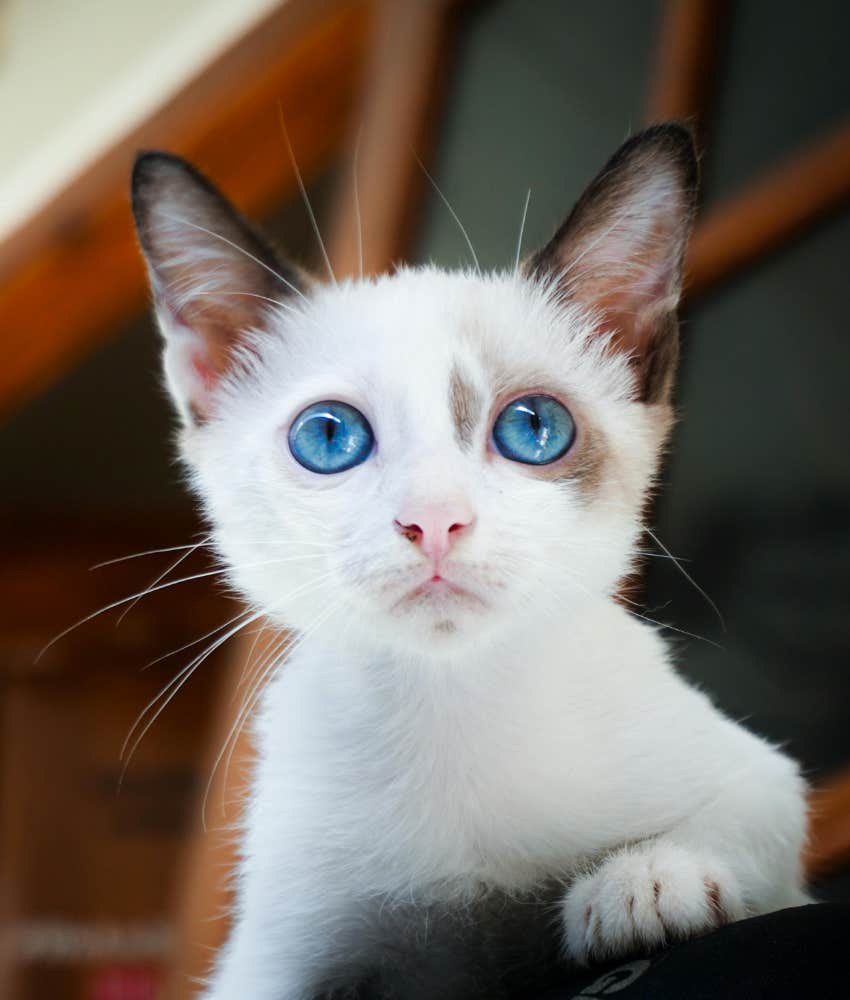5 Ways A Cat's Purr Is Said To Have 'Healing Powers' On Their Human
Your cat really is a magical creature.
 Hazan Akoz Isik / Pexels
Hazan Akoz Isik / Pexels The sound your cat makes when it purrs is distinct from any other noise. Some cats purr softly, like a gentle hum, while others have a loud purr that sounds more like an engine rumbling.
Yet all cats’ purrs share distinct qualities that can help their owners feel better, mentally and physically.
Here are 5 ways a cat’s purr has ‘healing powers’ for their human:
1. Reduces stress
Research done on cat anatomy posits that their purr comes from the muscles in their larynx. As those muscles move, they tighten and loosen around the part of the larynx that surrounds their vocal cords. The air vibrates as your cat breathes, producing that sweet, calming purr.
You might notice that petting your cat elicits a purring sound from them. This could be because they’re content, sitting on their person’s warm lap, receiving affection. Purring offers comfort, making you feel like you’re less alone, and you are because you’re spending time with your furry friend.
 Photo: sambarfoto / Canva Pro
Photo: sambarfoto / Canva Pro
Petting your cat can increase serotonin and oxytocin, hormones that make us feel happy and calm. Hearing your cat purr also produces those hormones, which can help to lower your stress levels.
So, when your cat purrs as you’re petting them, you’re getting a double dose of feel-good chemicals.
2. Heals bones, skin, & tissue
A cat’s purr vibrates at a frequency of 25 to 150 Hertz, and those vibrations might hold actual healing properties.
The frequency of a cat’s purring corresponds to known healing frequencies for humans.
Bones, particularly, respond to 25 to 50 Hz, and skin and soft tissue respond to around 100 Hz, all well within the range of a cat’s purr.
It’s possible that purring stimulates bone growth and repair, as the sound stimulates the cells responsible for healing bones. Cat’s purrs might help heal fractured bones and promote the formation of new bone tissue.
It’s also possible that the vibrations from purring can increase bone density, which is especially helpful for older people, who are at a higher risk for osteoporosis.
3. Lowers blood pressure
Listening to the rhythmic hum of your cat purring can also lower blood pressure.
Petting a cat and hearing it purr is a calming act. It can soothe your stressed-out nervous system and even lower your blood pressure.
 Photo: Sam Lion / Canva Pro
Photo: Sam Lion / Canva Pro
4. Helps strained muscles
Because your cat’s purr can help soft tissue growth, they might be able to help heal muscle strains and other connective tissue injuries.
Your cat’s purr vibrates from their body outward, so if you’re sitting near them, you’ll both hear the noise and feel the sensation, and you can benefit from the healing properties a purr holds.
The purring vibrations increase blood flow to injuries, which brings oxygen and nutrients to damaged areas, promoting quicker healing.
5. Lowers heart attack risk.
According to the Journal of Vascular and Interventional Neurology, your cat could reduce your risk of having a heart attack.
Researchers discovered that cat owners have a 40% lower risk of having a heart attack than people who don’t own cats.
 Photo : Tamba Budiarsana / Pexels
Photo : Tamba Budiarsana / Pexels
If you need another reason to let a fuzzy, adorable, four-pawed creature into your life, your heart health is it!
Purring is your cat's way of letting you know they care.
Cats start to purr when they’re only a few days old as a way to help their mother find them when it’s time for feeding. Some cats continue their dinner-time purr habit well into adulthood, letting you know they’re just so hungry and it’s time to eat.
But their purrs are more than a communication tool to tell you when they’re hungry or happy. Purring is a way that your cat can heal you.
So, the next time your cat starts to purr, let the sound wash over you, healing your heart, body, and soul.
Alexandra Blogier is a writer on YourTango's news and entertainment team. She covers social issues, pop culture, and all things to do with the entertainment industry.
